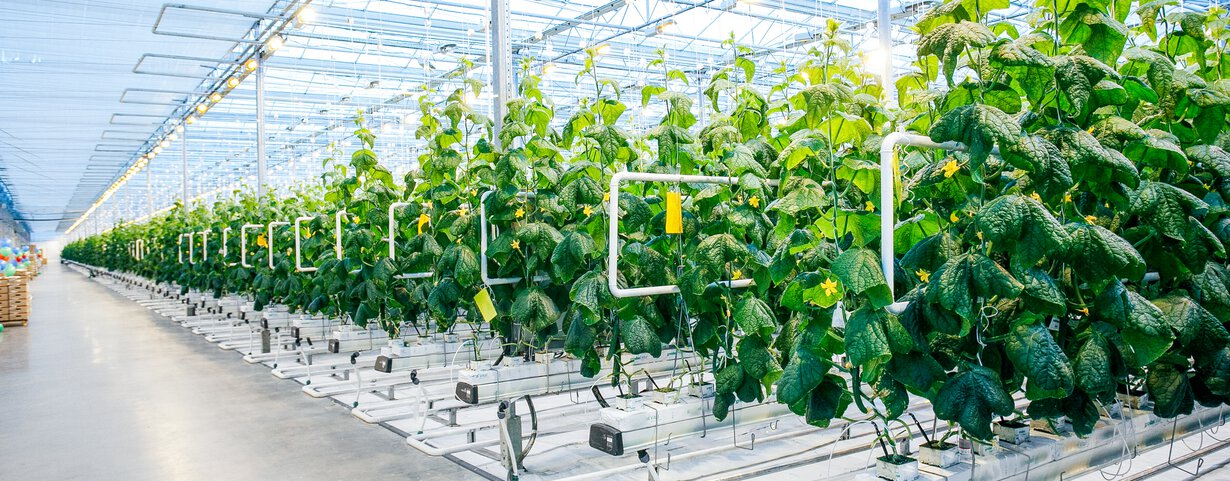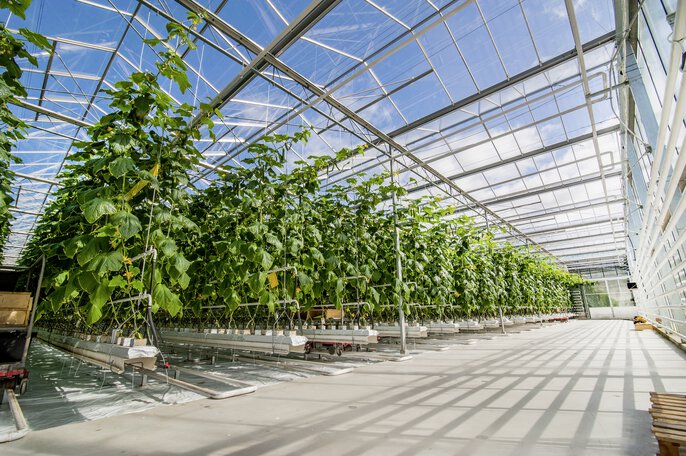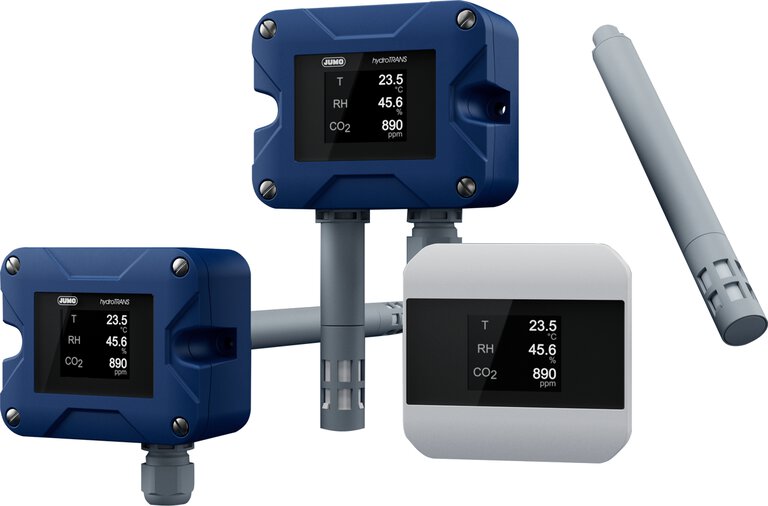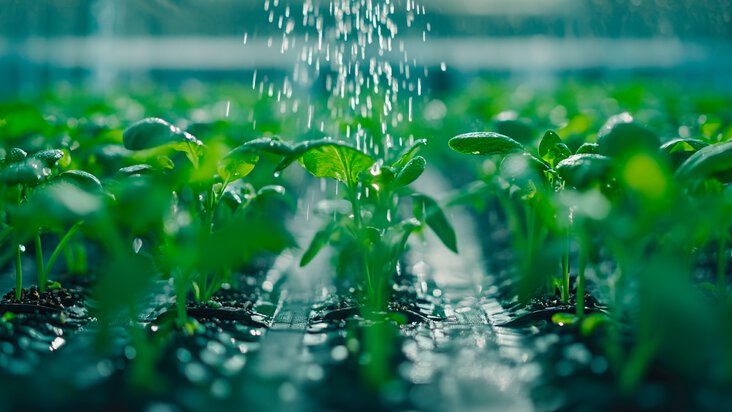

Climate control in the greenhouse: from measuring to optimal cultivation
A healthy crop starts with a stable climate. In modern greenhouse horticulture, the greenhouse climate is no longer a random factor, but a precisely controlled system in which temperature, humidity, light and CO₂ are continuously tuned to the needs of the crop. Sophisticated climate control systems are indispensable here to ensure optimal growing conditions. But what exactly does climate control entail? And how can growers use modern technology, such as JUMO's solutions, to optimise this process?
Table of contents
What is covered by climate control in greenhouse farming?
Climate control in a greenhouse comprises the total interplay of environmental factors that affect plant growth: temperature, humidity, ventilation, light intensity and CO₂ concentration. Growers strive for an optimal microclimate, tailored to the type of crop and stage of cultivation. Too much or too little of one element can lead to growth retardation, diseases or quality loss.
Which parameters are most critical for your crop? And how frequently are they measured?How do you control the climate in a greenhouse?
Climate is controlled by a combination of sensors, actuators (such as ventilation valves, heating elements, cooling systems) and a control system. Sensors measure the current situation; a PLC system translates this data into concrete controls in the greenhouse. Such climate control systems are at the heart of automation in greenhouse farming, where human actions are increasingly being replaced by data-driven processes.
For instance, if the temperature rises, the system automatically activates ventilation or screening. This requires accurate measurements as well as a reliable control system like the JUMO variTRON, which can monitor and adjust several variables simultaneously.
Can you see your climate data in real time? And can you easily intervene when needed?How do you ensure the ideal greenhouse climate?
The ideal climate varies from one crop to another. For tomatoes, the ideal daytime temperature is around 22-26°C and humidity of 60-75%. For lettuce or cucumber, these values may vary. The key here is balance. Overheating leads to evaporation and stress, while too much humidity encourages fungi. Smart climate control prevents these extremes and creates a constant, healthy growing environment. By continuously monitoring humidity, temperature and CO₂, modern climate solutions actively contribute to optimal humidity in the greenhouse.
What is the best humidity for a greenhouse?
The optimum humidity is usually between 60% and 85% RH (relative humidity), depending on the cultivation phase and the type of crop. During germination, higher humidity is desirable, while in the flowering phase too high values can actually cause problems. This makes reliable control of greenhouse humidity crucial for preventing plant stress.
JUMO's HydroTRANS series offers high measurement accuracy for RH and temperature and is optionally expandable with CO₂ measurement. This gives the grower a grip on the smallest fluctuations in the climate.
How do you prevent high humidity levels in the greenhouse?
High humidity increases the risk of condensation, mold growth, and plant diseases. You can prevent this by:
- Ventilation (mechanical or natural)
- Heating to raise the dew point temperature
- Dehumidification through air treatment systems
- Screen management to reduce moisture buildup
What systems are you currently using to reduce humidity levels?

Climate control in the greenhouse
How can I reduce humidity in my greenhouse?
An effective method is to combine heating and ventilation. Warm air can absorb more moisture, which is then expelled through ventilation. Accurate measurement of the dew point and relative humidity is essential to avoid energy waste.
The JUMO HydroTRANS supports this process by providing real-time data, enabling the control system to respond proactively.
What influences plant growth?
Plant growth is influenced by a complex interaction of factors:
- Temperature and light (photosynthesis)
- CO₂ levels
- Nutrients and irrigation
- Humidity
- Air circulation
A disruption in any of these factors can lead to growth stagnation or reduced yield.
How are you currently measuring these parameters? And are they integrated into a single central system?How are greenhouses controlled?
Today, greenhouses are managed using automated control systems or climate computers as part of broader automation in horticulture. These systems operate with real-time data from sensors and regulate processes based on setpoints: heating, cooling, ventilation, CO₂ injection, shading, and irrigation.
With the JUMO variTRON PLC platform, growers can easily manage multiple zones, analyze data, and adjust control settings via modern HMIs or external devices.
What technology is used in greenhouses?
Modern greenhouse horticulture makes use of:
- Climate computers
- Sensors for humidity, temperature, light, and CO₂
- Actuators for ventilation, heating, and cooling
- Shading systems and artificial lighting
- Water management and irrigation systems
- Energy management systems
- Cloud integrations for data collection and remote control
All these components form an integrated climate control system that enables growers to steer real-time towards optimal growth, yield, and quality.
JUMO offers a wide range of reliable measurement and control systems that can be fully integrated into modern greenhouse technology. Thanks to open communication protocols, integration with existing automation solutions is easy to achieve.
Conclusion: Smart climate = smart cultivation
Climate control is not a one-time action, but a continuous process of measuring, analyzing, and adjusting. With the right technology—such as that offered by JUMO—this process becomes simpler, smarter, and more efficient. As a result, yields increase, energy consumption decreases, and crop quality remains high—season after season.
- ${title}${badge}



